Leading a gluten-free lifestyle, whether you're gluten-intolerant or health-conscious, means you have to be conscious of everything you eat. One issue is choosing the best substitutes for products that otherwise traditionally contain gluten.
Flour tops the list since the most commonly available varieties are refined white flour or wheat flour. You must've noticed almond flour included in the list of best gluten-free flours, but is it? This, right here, is the guide to find out all about almond flour on a gluten-free diet.
Defining Almond Flour
As the name suggests, almond flour is a byproduct of ground almonds. The first process involves removing their skin by placing them in hot water. If you've ever seen skinless almonds, that's the process. Almonds are put in boiling water, which then allows the almonds to shed their skin.
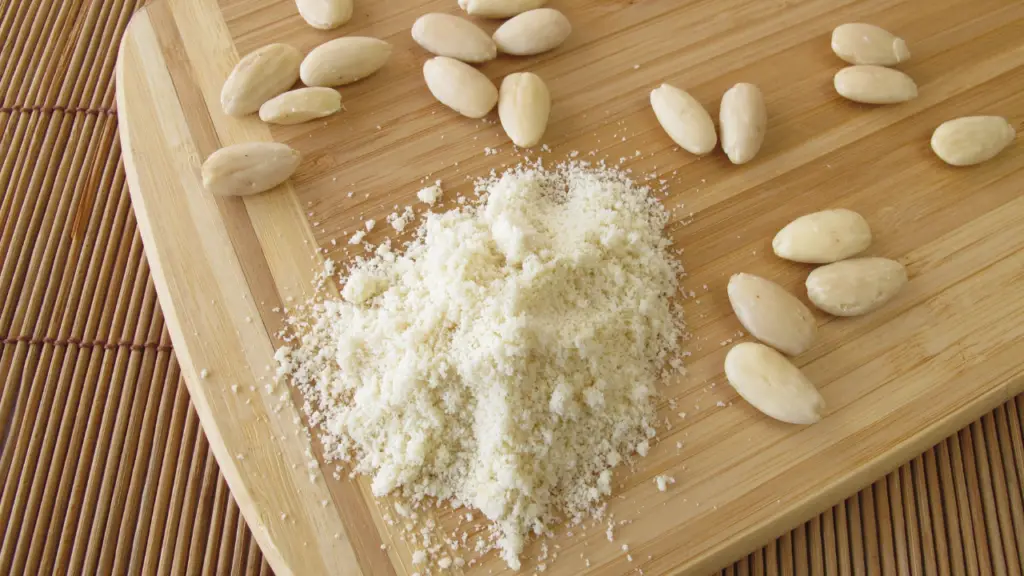
This step is where the difference between almond flour and almond meal lies. They're essentially similar ingredients, but the almond meal is further processed with the skins. Some manufacturers make almond flour from unblanched raw almonds but then specify that on the label too.
Back to almond flour, next, manufacturers finely ground almonds using heavy-duty machinery. Finally, the ground almonds are sifted so that the final version is as fine as it can be.
Gluten & Almond Flour
Almond flour is naturally gluten-free because, well, there are no gluten-based ingredients added to it. Nor is almond a gluten-containing grain or an actual nut; it's a seed! Considering there are no gluten-based ingredients in almond flour, you'll be ready to let it off the hook. Doesn't this mean you can add the first almond flour you see in your shopping cart? Not exactly.

Gluten comes from wheat, rye, and barley- the three primary gluten-containing grains and their byproducts. Thus, gluten further sneaks into cereals, flour, pasta, bread, baked goods, and processed foods. Almond flour does not include any of these ingredients unless the manufacturer adds gluten-based additives.
However, the risk of cross-contamination is always a possibility. And it's a potentially threatening one as well for susceptible gluten-intolerant individuals. A single bite of those cross-contaminated cookies could trigger the onset of symptoms for these individuals.
Keeping Safe From Cross-Contamination Risks
As the gluten-free products industry rises in demand, many manufacturers label their products as “no gluten ingredients” or “gluten-free.” A study of Italian naturally or labeled gluten-free products shows there's still a significant risk involved.
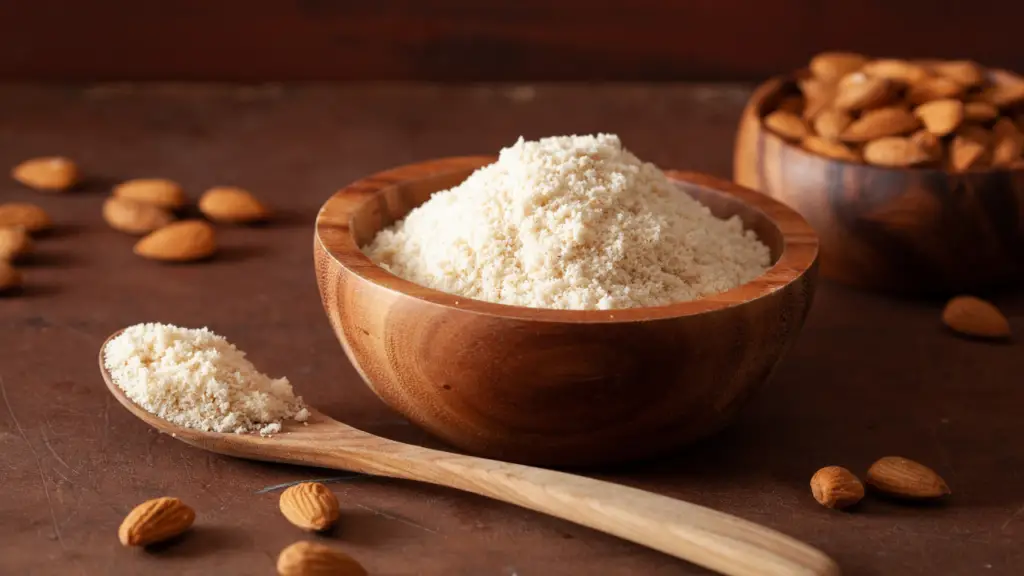
Out of the 173 products tested, 86.5% had a gluten consistency lower than ten ppm. The other 4.5% was for those with 10-20 ppm and 9% for higher than 20 ppm. Therefore, there's certainly a lower risk with labeled gluten-free products than naturally gluten-free foods without the label.
The products are usually compliant with FDA guidelines for lower than 20 ppm gluten. For maximum precautions, it's best to get certified gluten-free products. They're safer from the risks of cross-contamination than their labeled-only counterparts due to gluten-free manufacturing facilities.
Health Benefits of Almond Flour
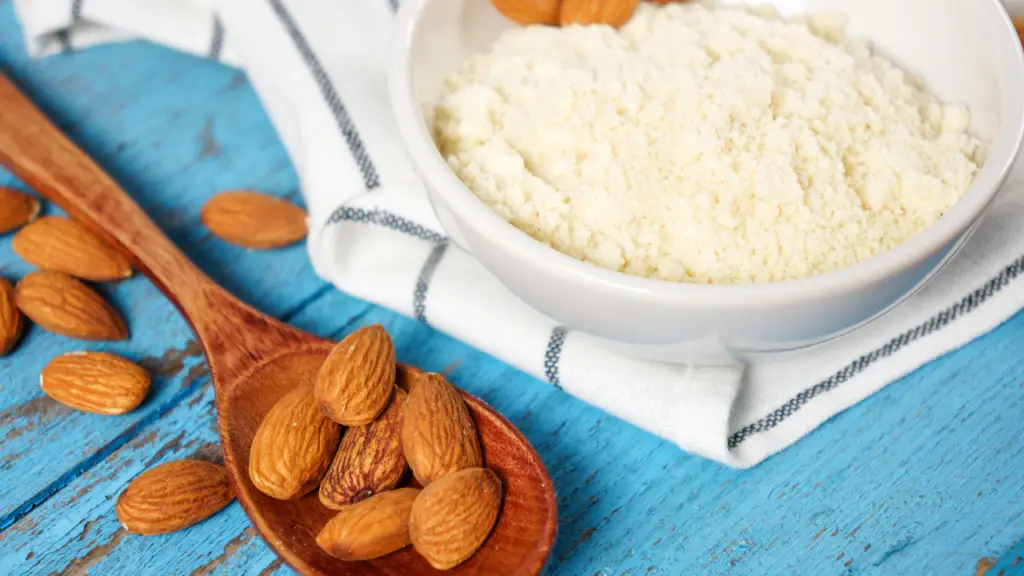
There's more than one reason why you should be eating almond flour as a healthier substitution. Next time you're trying to choose a gluten-free substitute for your baked goods, here's why it should be almond flour.
The Nutritious Value is Uncomparable
Almond flour is loaded with nutritional elements like vitamin E, manganese, iron, potassium, calcium, and magnesium. These vitamins, minerals, and antioxidants improve physical health and prevent various diseases. Neurological diseases, cardiovascular diseases, and cancer are life-threatening conditions that almond flour reduces the risk of.
Promote Cardiovascular Health
Cardiovascular illnesses remain one of the foremost reasons for global deaths on an annual basis. Almond flour may not be the solution, but it's one of the foods that can reduce the risks of cardiovascular diseases.
Unhealthy food, like fast food, that we may eat increases the levels of bad cholesterol in the body. Another preliminary marker of cardiovascular diseases is high blood pressure. Almond flour regulates both, and various studies reinforce this statement.
Control Blood Glucose Levels
People with diabetes are at an increasingly high risk of uncontrolled blood glucose levels, especially eating sugary and high-carb foods. Almond flour has low sugar and carbs and a moderate quantity of fiber and fat, making it a low glycemic index food.
The fats and fiber also keep you feeling full for a more extended period. Consequently, there'll be reduced cravings that lead to excessive intake of sugary and high-carb foods. The magnesium in it also assists in controlling blood sugar and regulating insulin levels.
Improves the Digestive System
Almond flour contains prebiotic fiber, the role of which is to regulate the digestive system. The body can't digest these fibers, but they're a food source for the healthy bacteria living in your digestive system. The regulation of these bacteria is necessary for a healthy digestive system, and that's what almond flour does.
Magnesium is a neutralizer for increased stomach acidity that is especially important for patients with acid reflux. Additionally, the insoluble fiber in almond flour normalizes bowel movements too. The next time you feel constipated and can't think of a solution, eat something with almond flour.
Rich in Antioxidants
The rich antioxidants amount in almond flour allows it to be beneficial by reducing the risk of certain diseases. Vitamin E, which acts as an antioxidant, improves cognitive functions and decreases the prevalence of Alzheimer's disease. Similarly, antioxidants help in containing the spread of free radical cells that cause cancers. And if you're looking for healthier skin, antioxidants will assist in that too.
Almond Flour and Diets
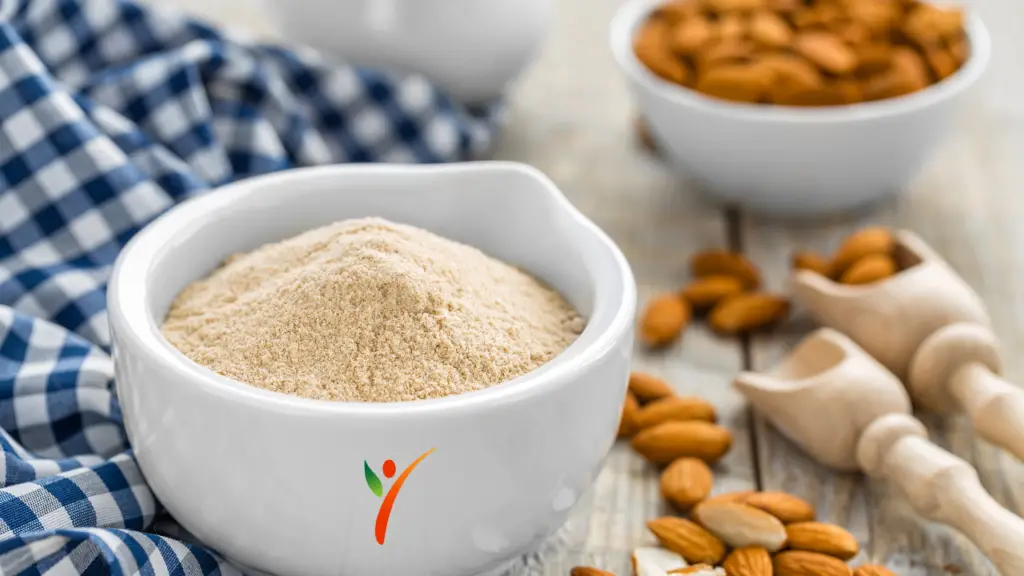
Adding almond flour to your diet goes beyond the gluten-free lifestyle. For those following a low FODMAP diet, almond flour can be a viable option. A low-FODMAP diet restricts eating too high-carb foods. As long as you're sticking to ¼ cup almond flour in a single serving, it's excellent on a low-FODMAP diet.
Keto dieters are fans of this flour due to its low-carb, high-fat, and moderate-protein levels also. You can use almond flour in the famous Whole30 diet as included in the list of non-grain-based flours. Almond flour is one of the most minimally-processed flours, so it complies with the Paleo diet too.
In conclusion, almond flour goes with almost any and every diet plan. Some of these diets would require you to check the quantity of almond flour or the portion size. Overall, it's an incredibly healthy option for any diet that you choose.
What to Expect With Almond Flour

Many new gluten-free dieters are under the misconception that any gluten-free flour will work like wheat flour. However, the type of flour you're using will undoubtedly bring a few changes to the cooking or baking process. Here are a few things you should get familiar with:
Changes in Taste and Texture
When it comes to texture, almond flour is one of the finer flours in the gluten-free category. Unless you're using unblanched almond flour, there won't be a coarse, gritty texture in the final product. Its impeccable taste also makes almond flour a favorite for gluten-free bakers.
It has a mildly sweet, nutty flavor to it. This alteration in taste will bring a slight difference in the final product. But you don't have to worry too much compared to substitutes like coconut flour that bring significant taste changes.
Substituting for Wheat Flour
Those well-acquainted with gluten-free baking will advise beginners to start with a 1:1 portion of wheat flour to almond flour. While this isn't necessarily applicable, it's a good starting point. You'll have to adjust the quantity of almond flour and binding agent as you continue to try gluten-free recipes.
Some recipes will need more almond flour since the batter tends to become wetter than with wheat flour. Plus, since almond flour doesn't contain gluten, you'll need a binding agent to avoid dense, flat baked goods. If you're using an ingredient like eggs, you should expect to add more egg whites to your gluten-free version.
Almond flour contains more calories than wheat flour, so pay attention if you're watching calories. For the best results, search for recipes that are already gluten-free and use almond flour.
Gluten-Free Almond Flours

Stepping into the grocery store when you are a newly transformed gluten-free dieter can be intimidating. Which products should you purchase? With the variety of manufacturers claiming their almond flour as the best, what are your options?
Here are several brands that manufacture high-quality gluten-free almond flour. In the end, you'll have to opt for the one that satisfies your tastebuds.
- King Arthur Almond Flour– Certified Gluten-Free, Certified Kosher, Non-GMO, and finely ground texture.
- Anthony's Almond Flour– Gluten-Free, Non-GMO, and Vegan.
- Oh Nuts! Almond Flour– Gluten-Free, Vegan, and finely ground texture.
- Sincerely Nuts Almond Flour– Gluten-Free, 100% Kosher, Vegan, and Low-Calorie
- Blue Diamond Almond Flour– Gluten-Free, finely ground texture.
How to Make Homemade Almond Flour
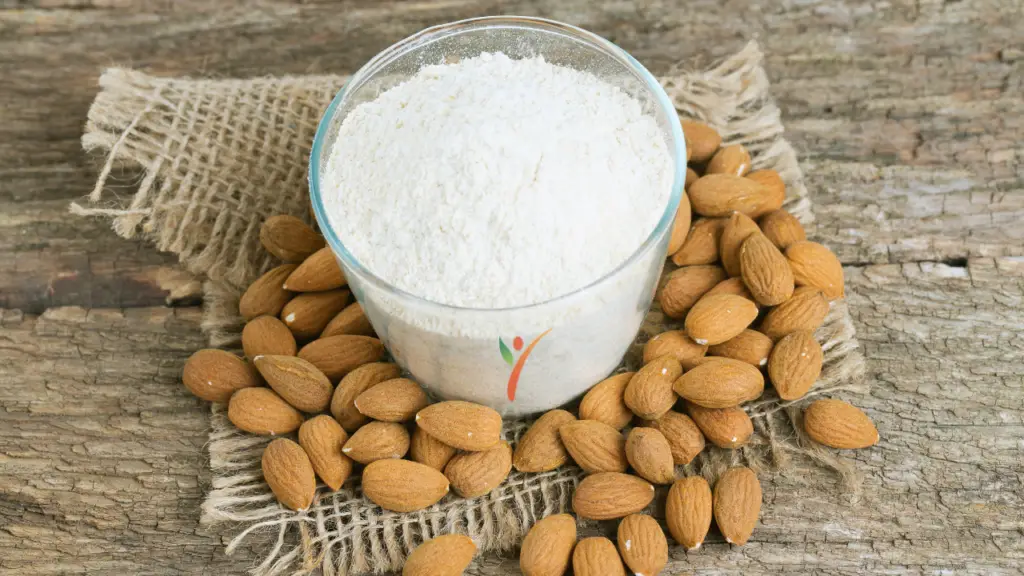
Making homemade almond flour is easy and healthy, especially if you're more into homemade foods than processed ones. It takes only a few minutes, and you'll have almond flour that can last you for months! Here's the recipe for 1 ¼ cup almond flour; add more almonds for more flour.
Easy Homemade Almond Flour Recipe:
- Total Time: 10 minutes
- Yield:1 ¼ cup
Ingredients
- 1 cup blanched or whole almonds
Directions
- To Blanch Whole Almonds: Place a pot with water on the stove. After the water starts boiling, add the almonds, leaving them in the boiling water for 2 minutes. Next, drain the water and rinse the almonds with cold water. Lastly, peel off the skins.
- After blanching, add the almonds to a food processor or high-powered blender. Pulse for 2-3 minutes. You will want to scrape the sides of the food processor or blender every few seconds to ensure finely ground almonds.
- Don't over-blend, as you will end up with almond butter as a result.

Final Words
Shifting to a gluten-free lifestyle is easier than one may think. With the right tips and information at hand, it becomes a breeze.
Don't let the small hurdles of the gluten-free lifestyle intimidate you from better options for your health.
Easy Homemade Almond Flour Recipe
Equipment
- High-Powered Blender or Food Processor
Ingredients
- 1 Cup Blanched Almonds
Instructions
- To Blanch Whole Almonds: Place a pot with water on the stove.
- After the water starts boiling, add the almonds, leaving them in the boiling water for 2 minutes.
- Next, drain the water and rinse the almonds with cold water.
- Lastly, peel off the skins.
- After blanching, add the almonds to a food processor or high-powered blender.
- Pulse for 2-3 minutes.
- You will want to scrape the sides of the food processor or blender every few seconds to ensure finely ground almonds.
- Don't over-blend, as you will end up with almond butter as a result.
Below is a Pinterest-friendly photo…. so you can pin it to your Gluten-Free Recipe Board!!
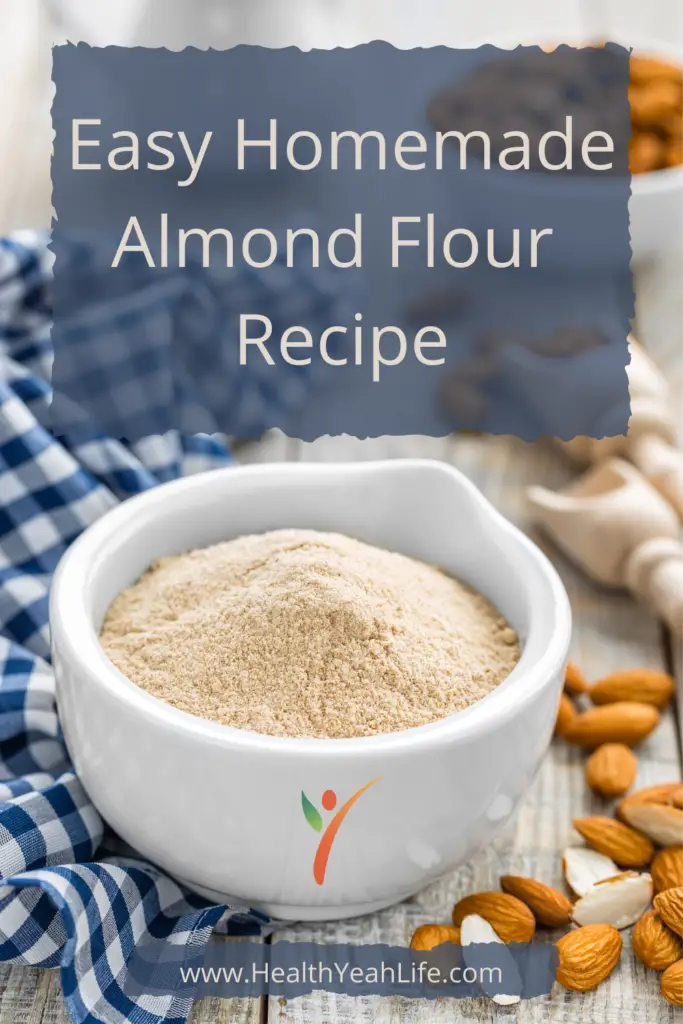
The owner of this website, HealthYeahLife.com is a participant in the Amazon Services LLC Associates Program, an affiliate advertising program designed to provide a means for sites to earn advertising fees by advertising and linking HealthYeahLife.com Review to Amazon properties including, but not limited to, amazon.com.






